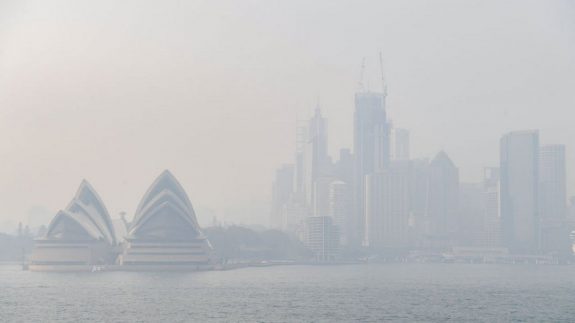Emergency department visits surged during 2019-20 bushfire season

Australian Institute of Health and Welfare Media Release
A new report from the Australian Institute of Health and Welfare shows increases in emergency department visits for respiratory problems and sales of asthma medication in regions affected by the 2019–20 bushfires.
The report, Australian bushfires 2019–20: Exploring the short-term health impacts, examines some of the short-term health impacts of the devastating bushfires, focusing on the period from September 2019 through to March 2020.
The report brings together data from NSW emergency departments, air quality monitoring, GP visits, Medicare-subsidised respiratory testing, and pharmaceutical sales data from all states and territories.
‘The bushfire season of 2019–20 saw widespread destruction of land, national parks and property, and tragically, 33 people lost their lives,’
‘The smoke-related health costs of the 2019–20 bushfire season have been estimated by researchers at the University of Tasmania to be $1.95 billion.’ AIHW spokesperson Mr. Richard Juckes said.
Visits to NSW hospital emergency departments for respiratory conditions increased in the 2019–20 bushfire season, compared to 2018–19.
‘Some areas of NSW were affected more than others, with emergency department visits rising by more than 50% in the Capital Region (includes Bateman’s Bay) during times of peak bushfire activity, and 86% in the Riverina region,’ Mr. Juckes said.
Similarly, some areas of Australia experienced worse air quality than others—Canberra residents experienced the worst air quality in the Territory’s history, and on some days, the worst recorded air quality in the world.
‘In the week beginning 5 January 2020, hourly PM2.5 concentrations at the Canberra-based Florey air quality monitoring station reached 2,496µg/m3—hourly readings of 300 and above are considered ‘extremely poor,’ Mr. Juckes said.
Analysis of pharmaceutical sales data revealed that sales and dispensing of asthma reliever medications, including salbutamol (often marketed as Ventolin or Asmol), increased in bushfire-affected regions.
In the Coffs Harbour – Grafton region, there were increases of 70% and 43% in sales of inhalers for shortness of breath for the weeks beginning 10 November and 17 November 2019, respectively.
Similarly, in the week beginning 29 December 2019, there was a 63% increase in the Capital Region.
Mr. Juckes noted that this report focusses on short-term impacts but it will be important to monitor any potential longer-term health and mental health, impacts of the 2019–20 bushfires.
There were almost 19,000 bushfire-related Medicare-subsidised mental health services accessed by 5,094 patients (as at 11 October 2020),’ Mr. Juckes said.
‘The most commonly accessed services were provided by a registered psychologist (46%) or a clinical psychologist (41%).’
Future analysis and updates will aim to explore hospital emergency department data beyond New South Wales, alongside hospital admitted patient data.
‘The AIHW will further analyse air quality and fire danger index data to provide a more comprehensive picture of the relationship between population exposure to bushfire smoke (fine particle pollution) and health. We are also exploring a broader program of work for the AIHW relating to the environment and health,’ Mr. Juckes said.
Like what we do at The AIMN?
You’ll like it even more knowing that your donation will help us to keep up the good fight.
Chuck in a few bucks and see just how far it goes!
Your contribution to help with the running costs of this site will be gratefully accepted.
You can donate through PayPal or credit card via the button below, or donate via bank transfer: BSB: 062500; A/c no: 10495969










2 comments
Login here Register here-
wam
-
Nelly Jane
Return to home pagemy darling’s asthma has returned with a vengeance this year. The connector could be the temperature??? From my memory of all the temperatures of the last 50 years of tv weather darwin was 32 day after day after day now it is 35+ 3 degree doesn’t seem much but in the tropics it is flamiing hot. I have tried to emphasise green house gases give a green house effect not %%^^@ climate change but who cares in this government or this group?.
Thanks for all the info seems gov are aware sadly Being informed doesn’t mean they’ll do anything about it Like buy a fleet of fire fighting planes instead smug bastard & assoc s fly corrman around world spruiking to get job @OECD re climate council Meanwhile 33,000 Aust languish O/S Told no flights gov can’t afford ! 😡🤬🤯